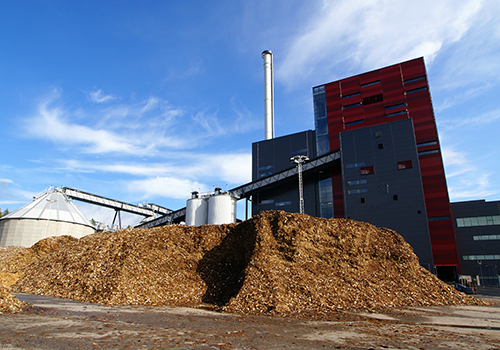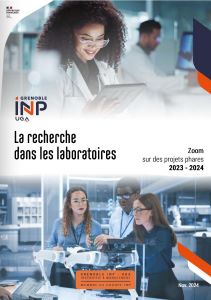Christine Chirat, teacher-researcher at Grenoble INP – Pagora and LGP2, will be present at the CNRS Forum "What remains to be discovered", on 14 November 2015 in Paris, where she will give a conference on lignocellulosic biorefinery.
Both abundant and renewable, biomass does not produce more CO2 when it is burned than it absorbs during photosynthesis. These advantages justify the devotion of appropriate means necessary to harnessing it, as second-generation biofuels or for green chemistry. If bioplastics from starch already exist, research is progressing to create polymers and green chemical products which exploit the cellulose and hemicellulose of wood. In the long term, biomass could replace a large part of the 250 to 300 million tonnes of petrol used to supply the chemical industry. LGP2 is working closely with paper manufacturers, who today are the biggest chemists of the wood industry. "We are striving to improve the valuation of the various components of wood", explains Christine Chirat. "An interesting strategy would be to extract at least a part of the hemicellulose, which represents between 20 and 30% of the wood, before extracting the cellulose fibres by the so-called 'kraft' process. The hemicelluloses of wood are polymers consisting of the following five main sugars: glucose, mannose, galactose, xylose and arabinose. These sugars can allow the production of a multitude of products and materials, such as alcohols by fermentation, green surfactants, biopolymers, molecules for medical applications, etc." In addition to its beneficial effect on the carbon balance of the chemical industry, the valorisation of these sugars in addition to the commercialisation of cellulose would improve the profitability of pulp mills and ensure their sustainability.

Both abundant and renewable, biomass does not produce more CO2 when it is burned than it absorbs during photosynthesis. These advantages justify the devotion of appropriate means necessary to harnessing it, as second-generation biofuels or for green chemistry. If bioplastics from starch already exist, research is progressing to create polymers and green chemical products which exploit the cellulose and hemicellulose of wood. In the long term, biomass could replace a large part of the 250 to 300 million tonnes of petrol used to supply the chemical industry. LGP2 is working closely with paper manufacturers, who today are the biggest chemists of the wood industry. "We are striving to improve the valuation of the various components of wood", explains Christine Chirat. "An interesting strategy would be to extract at least a part of the hemicellulose, which represents between 20 and 30% of the wood, before extracting the cellulose fibres by the so-called 'kraft' process. The hemicelluloses of wood are polymers consisting of the following five main sugars: glucose, mannose, galactose, xylose and arabinose. These sugars can allow the production of a multitude of products and materials, such as alcohols by fermentation, green surfactants, biopolymers, molecules for medical applications, etc." In addition to its beneficial effect on the carbon balance of the chemical industry, the valorisation of these sugars in addition to the commercialisation of cellulose would improve the profitability of pulp mills and ensure their sustainability.

Grenoble IN'Press
Contact
- Vice-présidente Recherche et du Conseil Scientifique
Lorena Anghel - Vice-présidente Innovation et Relations entreprises
Gaëlle Calvary - Directeur de la DRIVE
Cédric Di Tofano Orlando
Tél. 04 76 57 43 16 - Annuaire





